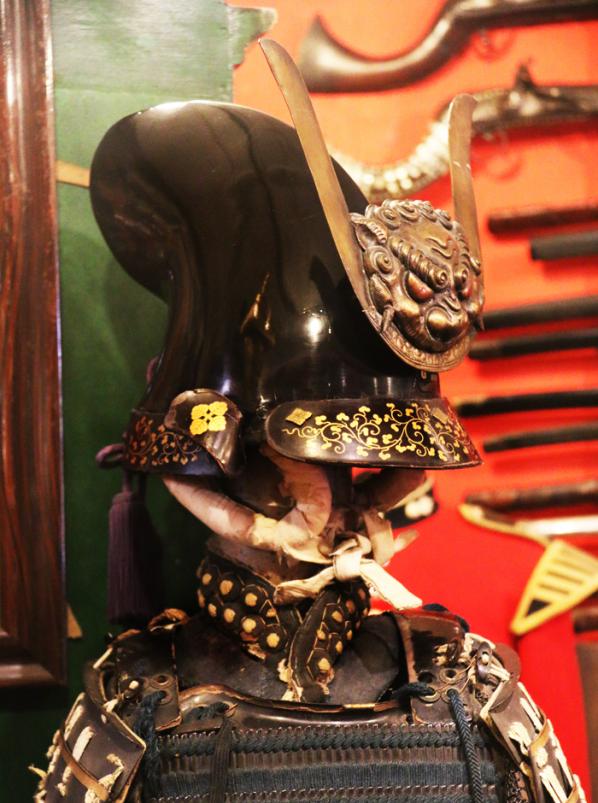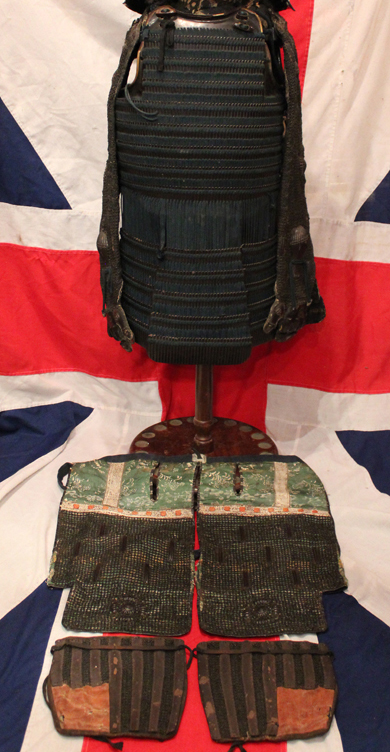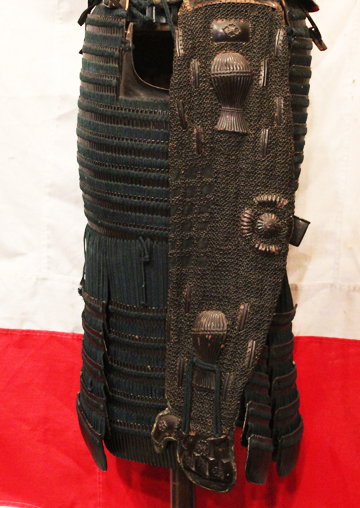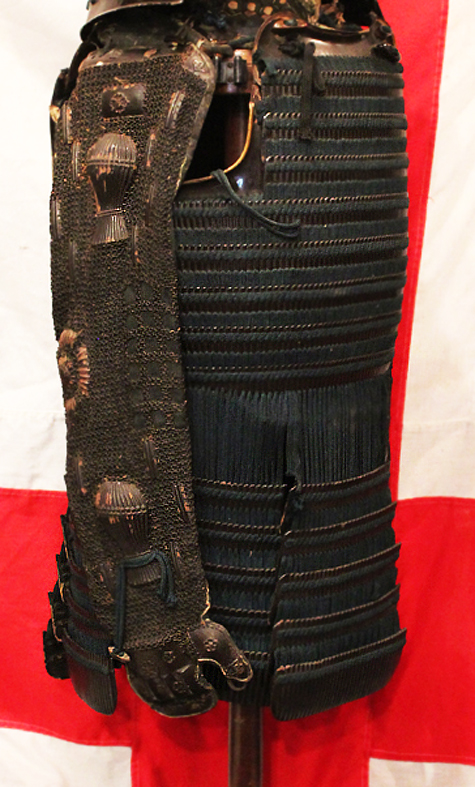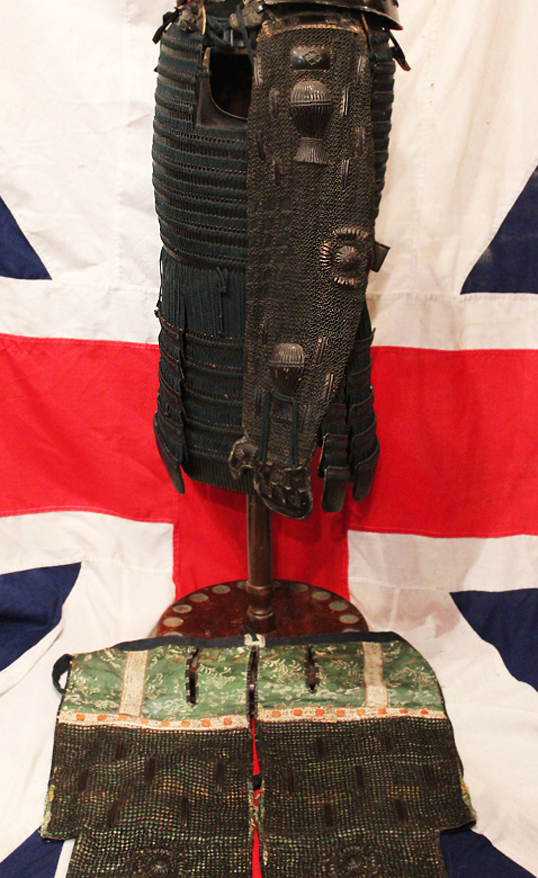Full Suit Of Original Early Edo Period Samurai Gesoku Armour, Shown with a Kabuto Helmet {Kabuto Now Sold}
In our opinion there is no greater aesthetically attractive suit of antique original armour to compare to the Japanese samurai armour. One can see them displayed in some of the finest locations of interior decor in the world today.
For example, in the Hollywood movies such as the James Bond films many of the main protagonists in those films decorated their lush and extravagant billionaire properties with samurai armours. They can be so dramatic and beautiful and even the simplest example can look spectacular in any correct location with good lighting.
Original early Edo period.
Chain mail over silk Kote arm armour with plate Tekko hand armour. Fully laced and plate Sode shoulder armour Fully laced four panels of Haidate waist armour Fully laced Kasazuri thigh Armour, with Suneate. This armour is absolutely beautiful.
Japanese armour is thought to have evolved from the armour used in ancient China and Korea. Cuirasses and helmets were manufactured in Japan as early as the 4th century.Tanko, worn by foot soldiers and keiko, worn by horsemen were both pre-samurai types of early Japanese cuirass constructed from iron plates connected together by leather thongs.
During the Heian period 794 to 1185 the Japanese cuirass evolved into the more familiar style of armour worn by the samurai known as the dou or do. Japanese armour makers started to use leather (nerigawa) and lacquer was used to weather proof the armor parts. By the end of the Heian period the Japanese cuirass had arrived at the shape recognized as being distinctly samurai. Leather and or iron scales were used to construct samurai armours, with leather and eventually silk lace used to connect the individual scales (kozane) which these cuirasses were now being made from.
In the 16th century Japan began trading with Europe during what would become known as the Nanban trade. Samurai acquired European armour including the cuirass and comb morion which they modified and combined with domestic armour as it provided better protection from the newly introduced matchlock muskets known as Tanegashima. The introduction of the tanegashima by the Portuguese in 1543 changed the nature of warfare in Japan causing the Japanese armour makers to change the design of their armours from the centuries old lamellar armours to plate armour constructed from iron and steel plates which was called tosei gusoku (new armours).Bullet resistant armours were developed called tameshi gusoku or (bullet tested) allowing samurai to continue wearing their armour despite the use of firearms.
The era of warfare called the Sengoku period ended around 1600, Japan was united and entered the peaceful Edo period, samurai continued to use both plate and lamellar armour as a symbol of their status but traditional armours were no longer necessary for battles. During the Edo period light weight, portable and secret hidden armours became popular as there was still a need for personal protection. Civil strife, duels, assassinations, peasant revolts required the use of armours such as the kusari katabira (chain armour jacket) and armoured sleeves as well as other types of armour which could be worn under ordinary clothing.Edo period samurai were in charge of internal security and would wear various types of kusari gusoku (chain armour) and shin and arm protection as well as forehead protectors (hachi-gane).
Armour continued to be worn and used in Japan until the end of the samurai era (Meiji period) in the 1860s, with the last use of samurai armour happening in 1877 during the Satsuma Rebellion. The armour has some affixing loops lacking. Stand for photo display only not included. This armour has areas of worn and distressed lacquer and areas of cloth/material that are perished due to it's great age as would be expected, but the condition simply adds to its beauty and aesthetic quality, displaying its position within its combat use in Japanese samurai warfare. We would always recommend, in our subjective opinion, that original antique samurai armour looks its very best left completely as is, with all it wear and age imperfections left intact.
Code: 21624


